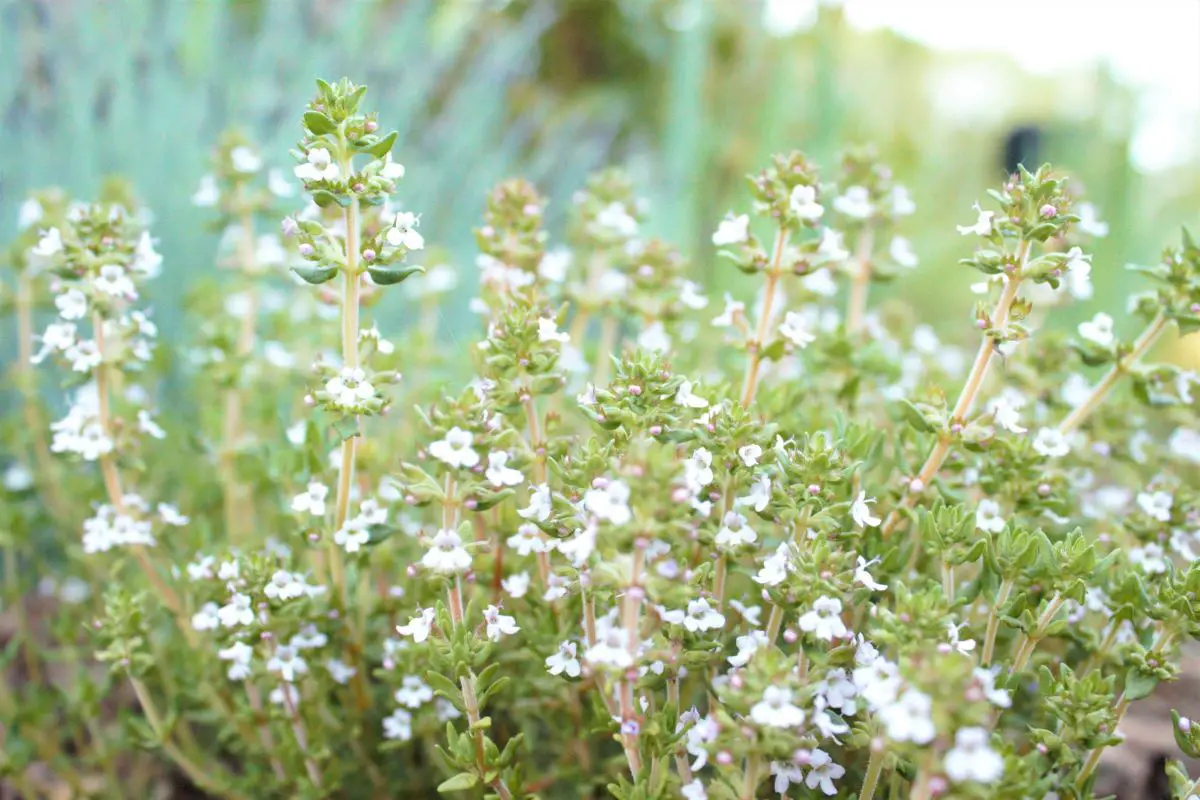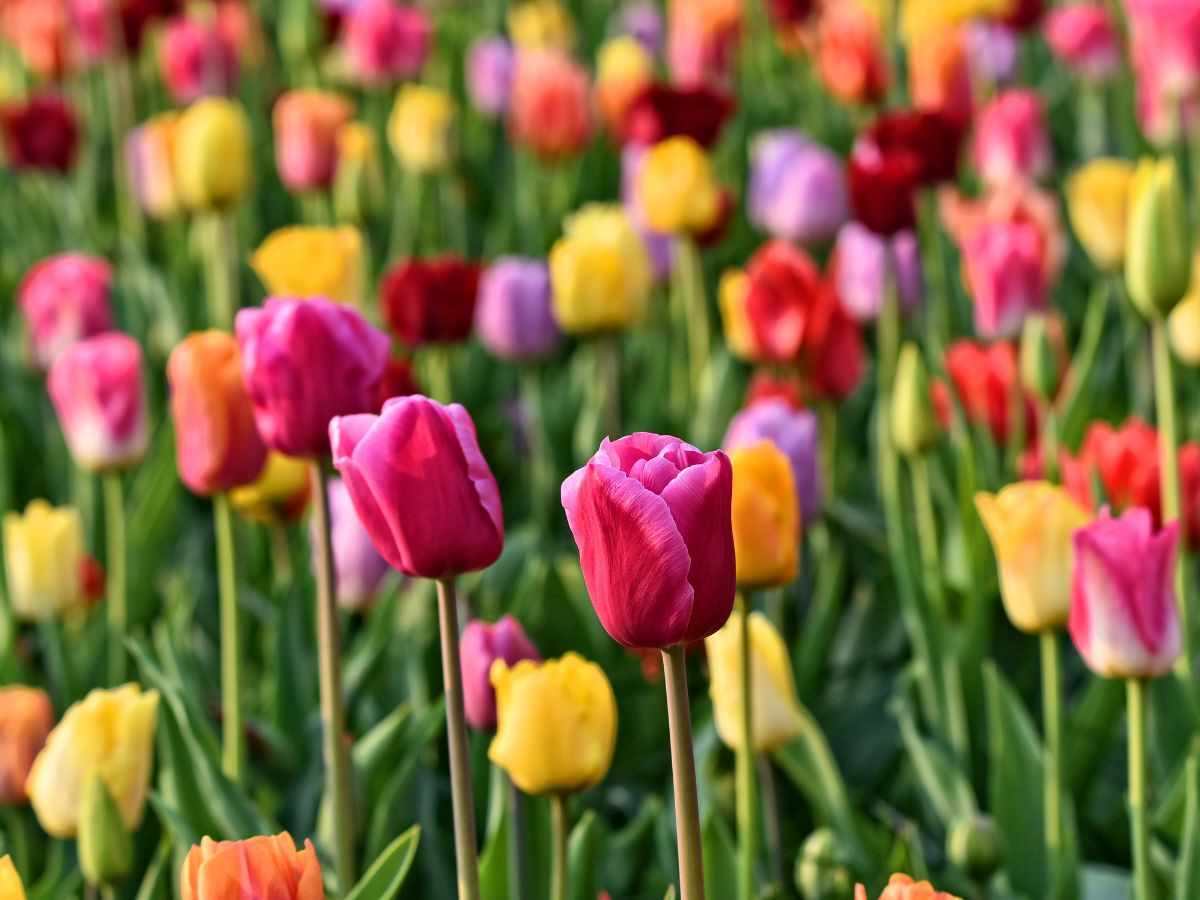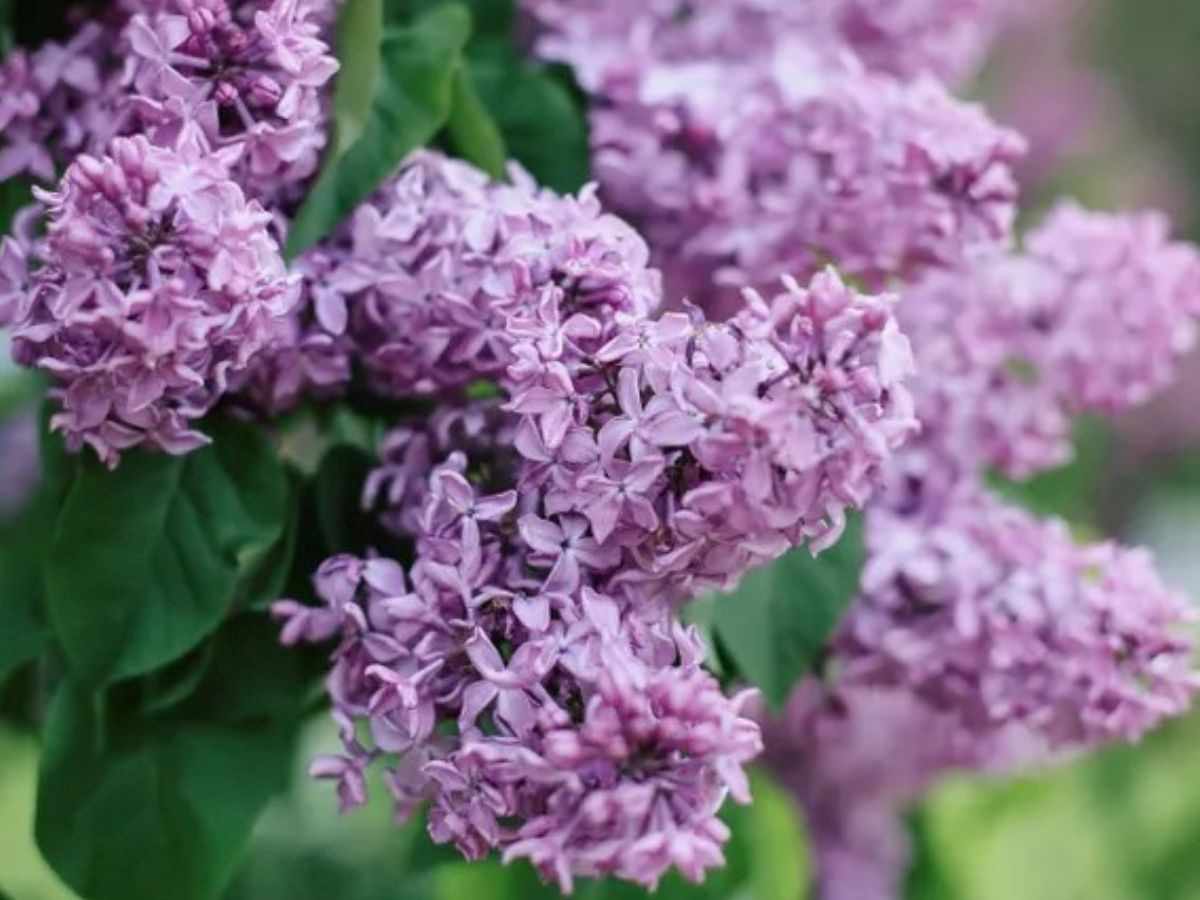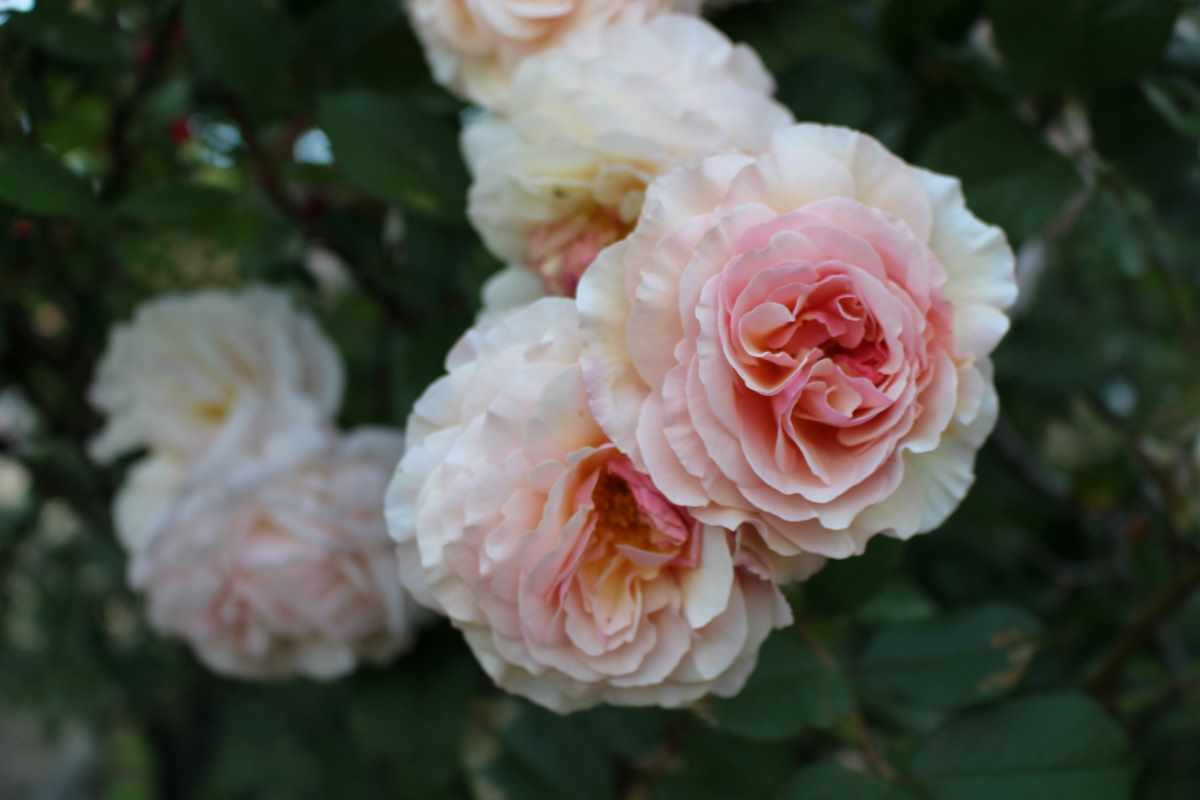Learn how to grow herbs from seeds. It is super easy. Growing herbs for culinary use means that you’ll have an endless amount of herbs for your kitchen. Herbs are an essential part of cooking because they add those unique flavors that cannot be found in any other ingredient. They can also serve a dual purpose by providing beauty in your garden when planted with other flowering plants and shrubs. Herbs offer wonderful intoxicating scents especially when you brush your hand against them. If you haven’t planted herbs in your garden yet, this guide will help you. What are you waiting for?
TABLE OF CONTENT
- Herbs used for cooking
- How to choose the best seeds
- Equipment you’ll need
- Choosing the correct type of soil
- Providing the best growing conditions
- When to start seed sowing
- When to plant seedlings in the ground
- Care after planting seedlings in the ground
- Some recipes to try

HERBS USED FOR COOKING
Oh boy. This can be a very long list, but I am going to shorten it up to the herbs that I use most in my kitchen.
- Basil I believe that this is one of the most important herbs, and one of the most used herbs in cooking.
Basil can be used in sauces, soups, marinades, salads, drinks, Ice-cream, canning, you name it. - Thyme and oregano like basil, can be used in many different applications. However, they do have a stronger flavor than that of basil. So you may want to plant more basil plants than thyme and oregano, unless you are planning on dehydrating them.
- Dill and fennel are very similar plants; however, their flavor is vastly different. Fennel has more of a sweet licorice flavor, while dill is more, well, dill like and has a hint of spicy.
Fennel can be used in omelets, sausages, pasta sauces, and in many different applications, especially in Italian style dishes.
Dill can be used in pickling, potato salads, pasta salads, sauces, salad dressing, and as a seasoning to many dishes.
Both the seeds and leaves, in both fennel and dill, can be used as flavoring. - Parsley is a great herb to add into your garden because it can be used either as a salad green, such as in tabouleh, or as flavoring herb in many different applications, especially in Mediterranean dishes.
If you are planning to plant parsley for tabouleh, make sure to plant plenty of it. - Cilantro is also a great herb to add to your garden. Both the leaves and seeds of cilantro can be used in cooking. Cilantro seeds are known as coriander, and can be grounded and used as seasoning in many Mediterranean, Mexican, and Indian dishes.
- Rosemary is a wonderful herb to have and can be a perennial plant in many areas. It can add a wonderful flavor to almost any dish you can imagine.
Growing rosemary from seeds takes FOREVER for the seed to germinate, and FOREVER for the seedling to grow to a sizable plant that is ready to be transplanted. So I advise you to buy a rosemary plant rather than trying to grow it from seed. - LAVENDER like rosemary, can be used in many similar applications, and as a substitute to rosemary. Lavender can be a perennial in most climates depending on the variety you choose.
English lavender is the most fragrant and flavorful of most varieties.
Like rosemary, lavender takes ages to grow from seed into a sizable plant that can actually be used and enjoyed. So just buy a plant and not a seed.
Lavender also requires a period of stratification in order to germinate. Stratification is simply allowing the seeds to go through winter like conditions in order to germinate. You can simulate that by placing the seeds into a fridge. - Chives is a great herb to have, and can be used fresh as a garnish, or as an added flavor to many dishes.
Chives are also a perennial plant which simply means that it’s a plant that will come back every year. Plant it once and forget it. - Green onions are also wonderful, and some varieties can be perennial. Green onions are so versatile and can also be used as a substitute to yellow onions.
- Sage can be used in baking and cooking. It adds a unique flavor especially to soups and sauces, and can be used to flavor sausages and all types of meat dishes.
It has a unique spicy minty flavor. Only a small amount of sage is used in cooking because of its strong flavor. You do not need that many plants to have a flavorful dish. In fact one sage plant should be enough to supply your kitchen for the summer and winter. - Chamomile is an herb that can be used in baking and as a tea. The flower can be harvested and dried.
If you are planning on using chamomile as a tea, make sure to plant plenty of chamomile. - Mint there are many different varieties of mint. Each mint variety can have different uses because they vary drastically in flavor. My favorite mint is spearmint.
Spearmint can be used as a tea, in drinks, to flavor water, in salads and sandwiches, and in some Mediterranean dishes. It can also be used in baking.
Mint is also a perennial plant and can be invasive, so it is best planted in pots.
HOW TO CHOOSE THE BEST SEEDS
There are many factors to choosing the best seeds, some of which are who you buy it from, how old are the seeds, what conditions where they stored in, what varieties are they, are they heirloom or hybrid? And so on and so forth.
The most important factor to pay attention to is who you are buying your seeds from. The rest of the factors lean in on this one.
I used to be an amazon seed buyer. Not any more. After several times of failed seed packets, I no longer buy my seeds from amazon.
Not dumping on amazon or anything. In fact I buy most of my stuff off of their website, but not seeds. I do not recommend to anyone buying seeds off of their website. In fact, I recommend against it.
You might ask why? There is a very good reason for that. The fact is, you do not really know anything about your average amazon seed supplier. You do not know where the seeds are coming from, what condition are they being stored in, are the seeds actually what the packet says they are? and so on and so forth.
Many times I received seed packets with no markings or writing on them whatsoever to indicate what kind of seed they are, or to which plant they belong.
That can be a very bad thing when you have ordered many seeds off of the same website and you are receiving different shipments, and non of them tell you what seeds they are!
Can you imagine how frustrating that could be? I can! and then it’s time to play the guessing game to figure out what am I planting and how should I plant it because every seed requires a different kind of planting conditions.
Not to mention that after you do the figuring out of seed kind, you plant, and most of the seeds do not germinate. Great, I just wasted my money for nothing. No, I actually waisted my money so that I can get extremely frustrated! So please, I beg you, do not buy seeds off of that said website unless you specifically know and trust the supplier.
- A few places that I love to buy seeds from are Heaven’s Harvest. They have great heirloom seeds. Their seeds come well packaged, and they have a great germination rate. One thing I wish that they did have but they do not, and that is information about the seeds you are buying and instruction on how to plant them and how to care for them after they germinate. Other than that, they are a great seed provider.
- Johnny’s Seeds are another great resource for seeds. They have a great selection of both heirloom and hybrid, and the information on the back of the seed packets are just priceless. They provide you with information about the plant, how deep to plant the seeds in, what conditions they require to germinate, how to care for them after germination, and how to plant them and care for them when they are ready for in-ground planting.
- Rare Seeds also known as Bakers Creek Seeds have a wonderful selection of heirloom seeds, and like the name says, rare seeds. So if you are a rare seeds collector, bakers creek would be a great option for you. Their seed packets also offer great planting instructions.
- Eden Brothers are another great resource. I haven’t personally bought any seeds from them, but they do have a good reputation.
When you are buying seeds from a grocery store, or even a big box store, make sure to check the expiration date on the seed packets because those seeds could have been sitting there for a really long time. Most seeds have an average life span of three years. After that the germination rate gets super spotty.
Another important factor to check for when you are buying seeds from a big box store or a grocery store is the conditions that the seeds are stored in. Is it too sunny in that location? Is it too hot? Is it humid? Is it in a shady location? Is it airconditioned? Are the seeds stored in a plastic bag, a paper envelope, or wide open? These are all very important factors to pay attention to.
Most seeds require to be stored in a non humid, and cool environment. They also like to breath. So avoid seeds that are stored in plastic bags because they cannot breath. Seeds do need air because they are “living”.
Avoid seeds that are stored in hot and sunny locations because those seeds could have been scorched to death.
Avoid seeds that are in extremely humid environment because those seeds could get moldy, diseased, and most likely are not viable.
When you are buying seeds from a big box store, try to go for seeds that are in paper envelopes, and that are stored in a cool, dry location where they are not exposed to the sun. Those are the most likely seeds to germinate. And again, always check the expiration date.
Seed variety is something that you get to choose, and the places that I listed here as seed resources should provide you with most seed varieties. One thing that is important to note however, is that if you want to store seeds from your plants after you have planted them, you should plant heirloom and not hybrid seeds.
Hybrid seeds will not give you the same seed variety when they produce their own seeds.

EQUIPMENT YOU’LL NEED
Self watering seed starting trays. These are crucial to have especially as a beginner. Self watering seed starting trays have a wicking matt that absorbs the water from the tray. The seed starting pods sit on top of the wicking matt allowing the soil to absorb the moisture through the matt.
With self watering seed starting trays you’ll only need to water maybe once every week or every other week depending on your environment.
The reason why I believe they are important is because seeds should not be allowed to dry up while they are in the process of germinating. Once the seeds dry out after they have been allowed to enter the process of germination, they die. It is super vital to keep them moist at all time. The self watering trays help you do that without much effort on your side.
Grow lights If you are starting your seeds indoors, which I highly suggest to do in order to get the maximum yield out of your plants especially if you live in a zone 5 like I do or colder, you’ll definitely need either a strong LED light, or a grow light. You can also use florescent lights.
You’ll want to make sure to place your light close enough to the plants to prevent them from turning leggy, causing week and long stems. If your plants are stretching out in order to reach the light, you’ll know that your light is too far.
If you begin to observe tip burning on your plants, then perhaps the light is too close to the plants and you need to push it slightly further away from your plants.
I found that LED lights are the most cost effective. Even though they are more expensive than florescent lights, they are highly energy efficient considering that you need to keep the lights on for your plants sixteen hours per day, each day, until the plants are ready to go in the ground. They are also more environmentally friendly.
Liquid fertilizer. You could choose whichever fertilizer you want, but I highly suggest using an organic fertilizer since after all, this food is going to end up in your belly. I like to use the Espoma Organic liquid fertilizer. I have seen great results using it. My seedlings are super happy and healthy.
Mini trowel. This is not necessary, but handy to have when removing the seedlings from the trays and transplanting them. You can also use the back of a spoon, a butter knife, or a popsicle stick to do the same thing.
CHOOSING THE CORRECT TYPE OF SOIL
The best type of soil to use for seed starting is a seed starting soil mix. This type of soil mixture is usually designed to be light and airy in order to allow for root development on the seeds.
When you simply take some soil out of your yard and place it in a pot, it will get extremely compacted preventing the seeds from initiating proper root development, not to mention that you will also be growing weeds.
As a beginner, it is difficult to identify what is a weed and what is not a weed. So always make sure to use a seed starting mix when starting seeds.
PROVIDING THE BEST GROWING CONDITIONS
When growing seedlings, you do not want a super humid or a super dry condition.
If you have a super humid condition, you’ll want to run a small fan in the direction of the plants to prevent them from getting moldy. This will also allow the plants to create stronger stems helping them in better withstanding outside weather conditions.
On the other hand if you have super dry conditions, you might want to mist the plants with some water using a mister to prevent them from drying out.
Some seeds may require a heating mat in order to germinate especially if you live in a cold environment, or you can simply place them in the warmest room in your house.
On the opposite side of the spectrum, some seeds may require a cold period to germinate such as lavender and rosemary.
You’ll generally find this information available on most seedling packets.
WHEN TO START SEED SOWING
You can usually find this information on the back of the seed packet, but if this information is not available there are several things to consider.
- how long does the seed take to germinate?
- how long does the seed take to grow to a sizable plant that’s ready to be planted in the ground?
- how long does it take to be able to harvest the plant after sowing it?
These are three things to consider. Every plant is different. and usually a google search can help you find this information if it is not available on the seed packet.
Once you have this information you’ll want to count back from harvest time all the way back to planting the seed while also taking in account your last frost date.
You can usually find your last frost date by simply doing a web search for your local area’s last frost date.
WHEN TO PLANT SEEDLINGS IN THE GROUND
Most seedlings, unless they are cold hardy, which simply means that they can tolerate some cold or frost, need to be planted after the last frost date.
Make sure to harden your seedlings by slowly exposing them to outside conditions before planting them in the ground.
CARE AFTER PLANTING SEEDLINGS IN THE GROUND
While planting the seedlings in the ground, provide them with an organic slow release fertilizer, and give them a good watering. A second in season application of fertilizer would be beneficial in increasing the yield and plant health.
You may need to water your seedlings once or even twice a day directly after planting for several days. That of course would be dependent on your humidity levels and the amount of rain that you get.
If you notice any insect damage on your herbs, you can apply an organic insecticide around dusk or dawn to prevent harming the beneficial insects. What I like to use is neem oil and diatomaceous earth. There are other options of course, but these are my go to.
Keeping the area where you planted your herbs weed free is very important. Weeds can take away the nutrients from your plants because when you fertilize the soil, weeds get fertilized too.
Weeds can also harbor harmful insects. That’s another reason why you’ll want to keep the area weed free.
Applying a good layer of mulch such as straw, wood chips, or animal bedding is also very helpful in that it keeps the soil moist allowing for less frequent watering.
SOME RECIPES TO TRY
Nut Free- Vegan – Gluten Free Focaccia Bread Recipe
Mediterranean Beef Kofta Kabobs – Beef Kafta
Shish Tawook Mediterranean Chicken Shish Kabob Recipe
Disclosure: Some of the links in this post are “affiliate links”. This means if you click on a link and purchase the item, I will get an affiliate commission. It will not cost you any extra money, but it will help me pay for this website, and it will help me to keep providing you with helpful articles such as this one. I only post links to products that I personally use and love, or to products that I wish I could have, and that could be of value to you. The information that I provide you with, my blog, videos, and many resources are free.





Be the first to reply